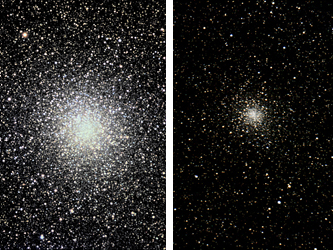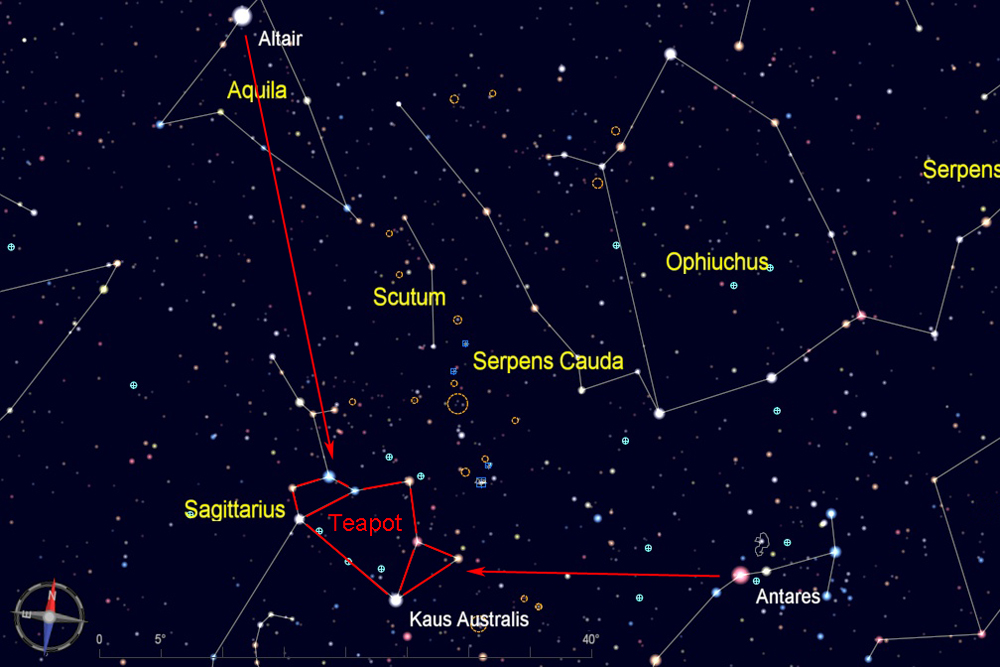| These two globular clusters are very different in size when viewed through a telescope. M22 is very large and bright, and through a large scope it is one of the most dramatic sights in the sky. M28 appears much smaller (partly because it is almost twice as far away), but it still can be spotted with a telescope of any size. Through a large scope its stars are well resolved. |
 |
| Evening visibility: |
July-September |
| Best viewed with: |
telescope |
| |
Printable chart (pdf) |
View larger image |
Directions:
From mid-summer to early fall, the distinctive teapot shape of Sagittarius can be seen low in the southern sky during the evening. It is about 50 degrees south of Altair (part of the Summer Triangle) and about 30 degrees east of bright red Antares. It is well worth learning to recognize the teapot, for it can guide you to dozens of beautiful deep-sky objects.
|
 |
| Look for λ (lambda) Sagittarii, the star that forms the top of the teapot's lid. From λ, M28 is less than 1 degree to the northwest, so both can fit in the same field of view of a low-power eyepiece. To find M22, look 2.5 degrees northeast of λ. M22 is large and bright enough to be seen easily as a hazy ball in binoculars or a finderscope. |
 |
| Star charts created with Cartes du Ciel |
| |
| |


